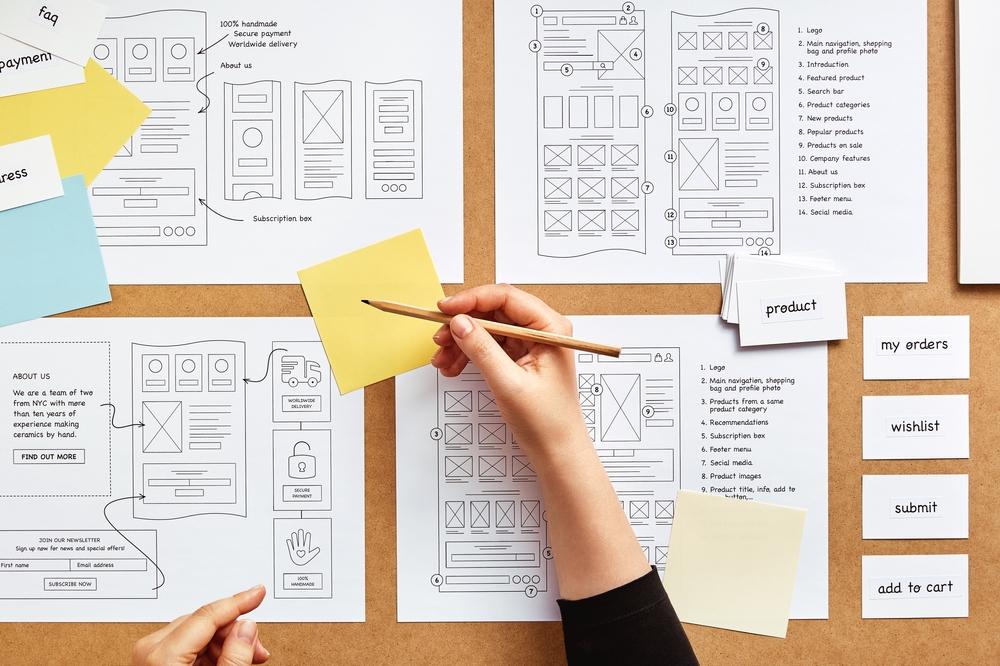In today’s fast-paced digital world, creating a product that not only meets user needs but also delivers an exceptional experience has become a paramount objective for entrepreneurs and startups. This pursuit is encapsulated in the concept of User Experience (UX) design.
While UX design has been around for decades, it has gained momentum in recent years as a way to help companies achieve their product goals in a more user-centered way. Despite its growing influence in product design, many companies are still confused about how UX design can help them achieve their goals. In this article, we will explore the basics of UX design, its role in product development, and why it is important for tech companies.
Understanding UX Design
User experience (UX) design is the process of designing products that are easy to use, efficient, and enjoyable for the user. It involves understanding the user’s needs and pain points and then designing a product that meets those needs in a way that is both intuitive and visually appealing.
However, it goes beyond aesthetics; it’s about crafting a seamless, intuitive, and enjoyable journey for users interacting with your product.
Central to UX design is the user-centered design philosophy. This approach involves putting the user at the forefront of every decision-making process. It requires understanding user behaviors, needs, and motivations through techniques such as surveys, interviews, and personas.
By empathizing with users, you can create solutions that genuinely resonate with your target audience.
UX vs. UI: Clarifying the Difference
UX design often gets confused with User Interface (UI) design, but they are distinct. It is important to draw their distinction for proper understanding.
While UI design focuses on the visual elements users interact with such as the colors, logos, button shape, etc., UX design takes a holistic approach, considering the entire user journey, including emotions, perceptions, and interactions. How the users will navigate through the solution and the emotions and experience it exudes in them.
The Key Elements of UX Design
At its core, UX design encompasses a spectrum of factors that shape how users perceive and interact with a product, but there are five key elements of a good UX design:
- User research: For a product or solution to be user-centered, UX designers must first conduct user research to understand the user’s needs and pain points. This can be done through surveys, interviews, and usability testing.
- Information architecture: An information architecture for the product must then be created. This involves organizing the content of the product in a way that is logical and easy to navigate for the target user.
- Visual design: The visual design for the product must now be considered. This involves aesthetics and visual appeal such as choosing colors, fonts, and layouts that are both visually appealing and functional.
- Interaction design: The next key element is to create the interaction design for the product. This involves defining how users will interact with the product, such as through buttons, menus, and forms.
- Usability testing: To ensure that the product is easy to use and meets the user’s needs usability testing is conducted and the needed iterations enforced.
The Key Principles of Effective UX Design

Aside from the key elements of every good UX design, there are also key principles every UX design must follow. The goal of these principles is to create products that are easy to use, intuitive, and delightful. They include:
1. Wireframing and Prototyping
Before diving into the final design of any solution, create wireframes and prototypes. Wireframes are like blueprints, outlining the layout and structure of each screen. Prototypes, on the other hand, provide an interactive preview of the user flow. Iterate on these prototypes based on user feedback to fine-tune the user experience.
2. Consistency and Familiarity
Consistency breeds familiarity, which in turn enhances usability. Establish design patterns and standards that persist across your product. Consistent navigation, button placement, and color schemes reduce cognitive load and empower users to confidently navigate your product.
3. Minimalism and Simplicity
Simplicity is critical to a frictionless experience. Remove unnecessary clutter and streamline interactions. A clean interface with straightforward actions minimizes confusion and frustration, making it easier for users to achieve their goals.
4. Feedback and Responsiveness
Users need feedback to understand the consequences of their actions. Provide instant feedback for user interactions, whether it’s clicking a button or submitting a form. Responsiveness assures users that their actions are being processed.
UX Design Process and Methodologies
User-centered design (UCD) processes include;
1. Discovery and Research Phase: Identify user needs, pain points, and preferences through research methods like surveys and interviews.
2. Conceptualization and Ideation Phase: Brainstorm ideas and create initial design concepts based on user insights.
3. Design and Prototyping Phase: Develop wireframes and interactive prototypes that visualize the user journey.
4. Testing and Iteration Phase: Collect user feedback through testing and iterate on design based on insights.
5. Implementation and Launch Phase: Develop the final product based on refined prototypes and launch to the market.
Now, the all-important question. What role does UX design play in product success?
The Role of UX Design in Product Success
UX design is the first step in creating a product that users love. The value of UX is difficult to measure, but there are some metrics:
1. Enhanced User Satisfaction and Engagement
Prioritizing user experience leads to higher user satisfaction and engagement. When users find a product easy to use and enjoyable, they are more likely to stick around and become loyal customers.
2. Increased Conversion Rates and Sales
A well-designed user experience can significantly boost conversion rates. By optimizing user flows and simplifying the checkout process, you reduce friction and encourage users to complete desired actions, such as making a purchase.
3. Brand Perception and Trust
A positive user experience reflects positively on your brand. Consistency between your brand identity and UX design builds trust. When users trust your product, they are more likely to choose it over competitors.
4. Competitive Advantage
In a crowded market, superior user experience differentiates your product. When users have a memorable and enjoyable experience, they are more likely to recommend your product to others.
5. Long-Term Business Growth
UX design isn’t a one-time task; it’s an ongoing process. Continuously gather user feedback and iterate on your design. This iterative approach leads to incremental improvements that keep your product relevant and user-friendly over time.
Case Studies: Successful Implementation of UX Design
Most of the popular companies are startups we know today became successful as a result of their intentionality towards designing for their users. Some of these companies include:
Apple Inc.: Intuitive and Seamless Ecosystem
Apple’s success lies in its cohesive ecosystem. Whether using an iPhone, iPad, or MacBook, users experience a consistent design language and intuitive interactions. This ecosystem-wide approach enhances user engagement and brand loyalty.
Airbnb: Personalization and Trust Building
Airbnb’s UX design focuses on personalization. By tailoring recommendations based on user preferences, Airbnb fosters trust and relevance. Their design choices enhance user confidence in the platform’s safety and authenticity.
Amazon: Conversion-Driven User Experience
Amazon’s UX design prioritizes conversions. The one-click purchase option, personalized recommendations, and frictionless checkout process drive sales by minimizing barriers to purchase.
Conclusion
In the realm of entrepreneurship and startups, UX design is a linchpin for product success. By adhering to the principles of user-centered design, entrepreneurs can create products that resonate with users, foster engagement, and drive growth. Understanding the crucial role of UX design empowers startups to build products that not only meet market demands but exceed user expectations, creating a foundation for long-term success in the ever-evolving tech landscape.



